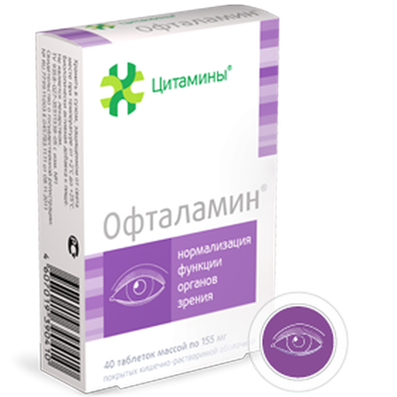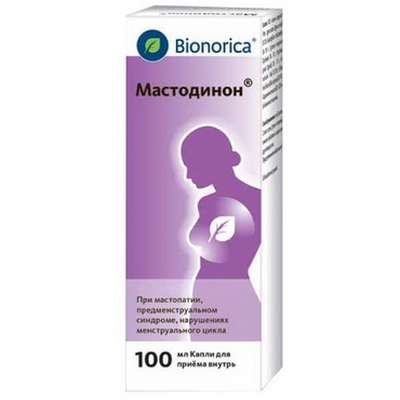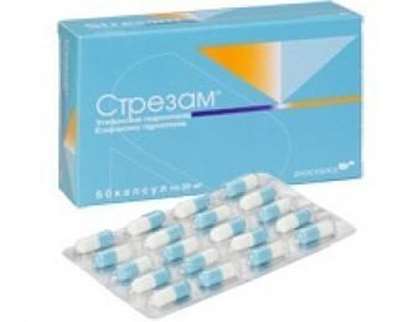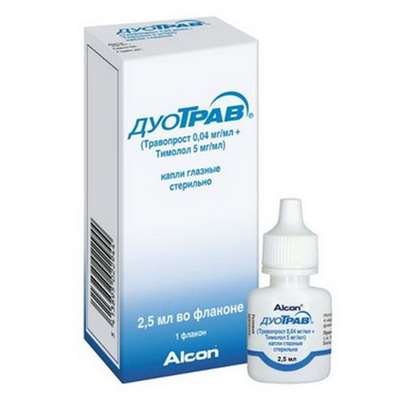Instruction for use: Bromfenac (Bromfenacum)
I want this, give me price
Pharmacological group
Other non-narcotic analgesics, including non-steroidal and other anti-inflammatory drugs
Ophthalmic products
Nosological classification (ICD-10)
H26.9 Cataract, unspecified
Extraction of cataracts, Cataract
R52.9 Unspecified Pain
Pain after cholecystectomy, Pain shooting, Non-malignant pain, Obstetric and gynecological pain, Pain syndrome, Pain in the postoperative period, Pain in the postoperative period after orthopedic surgery, Pain of inflammatory genesis, Pain than cancer genesis, Pain syndrome after diagnostic procedures, Pain after surgery Diagnostic, Pain after surgery, Pain after orthopedic surgery, Pain after injuries, Pain after the removal of hemorrhoids, Pain at the non-rheumatic inflammation of nature, Pain in inflammatory lesions of the peripheral nervous system, Pain in diabetic neuropathy, Pain in acute inflammatory diseases of the musculoskeletal system, Pain when the tendon pathology, Pain smooth muscle spasm, Pain spasm of smooth muscles (renal and biliary colic, intestinal spasms, dysmenorrhea), Pain spasm of smooth muscles of internal organs, Pain spasm of smooth muscles of internal organs (kidney and biliary colic, intestinal spasms, dysmenorrhea), Pain in trauma syndrome, Pain with injuries and after surgical interventions, Pain in chronic inflammatory diseases of the musculoskeletal system, Pain with duodenal ulcer, Pain syndrome in gastric ulcer, Pain syndrome in gastric ulcer and duodenal ulcer, pain, Pain during menstruation, pain syndromes, painful condition, Painful foot fatigue, Sore gums when wearing dentures, Soreness of the cranial nerves exit points, Painful menstrual irregularities, Painful dressings, Painful muscle spasm, Painful teeth growth, Melosalgia, Pain in the area of the surgical wound, Pain in the postoperative period, Pain in the body, Pain after diagnostic procedures, Pain after orthopedic surgery, Pain after surgery, The pains of the flu, Pain in diabetic polyneuropathy, Pain for burns, Pain during sexual intercourse, Pain during diagnostic procedures, Pain during therapeutic procedures, for colds Pain, Pain in sinusitis, Pain in trauma, Pain traumatic, The pain in the postoperative period, Pain after diagnostic procedures, The pain after sclerotherapy, Pain after surgery, postoperative Pain, Pain postoperative and posttraumatic, posttraumatic pain, Pain when swallowing, Pain in infectious and inflammatory diseases of the upper respiratory tract, The pain of burns, The pain in traumatic muscle injury, Pain in trauma, The pain of tooth extraction, The pain of traumatic origin, Pain caused by spasm of smooth muscles, Expressed pain syndrome, Expressed pain syndrome, traumatic origin, Postoperative pain, Post-traumatic pain, Post-traumatic pain syndrome, Torpid pain, Traumatic pain, Traumatic pain, Mild pain, Moderately severe pain, Moderate pain, Polyarthralgia with polymyositis
R68.8.0 * Inflammatory syndrome
Painful syndrome of inflammatory genesis, Pain syndrome with inflammation of non-rheumatic nature, Pain syndrome with inflammatory lesions of the peripheral nervous system, Painful inflammation of the shoulder joint, Painful inflammation after trauma or surgery, Painful inflammation after surgery, Painful hemorrhoids, Inflammation of the tympanic membrane, Inflammation of the larynx, Inflammation of the gums, Inflammation of cellulose, Inflammation of lymph nodes, Tonsillitis, Inflammation of muscles, Inflammation of soft tissues, Inflammation of the mouth, Inflammation after surgery and trauma, Inflammation after orthopedic surgery, Inflammation after trauma, Inflammation in rheumatoid arthritis, Inflammation of the middle ear, Inflammatory gum disease, Inflammatory diseases of the eyelids, Inflammatory eye diseases, Inflammatory swelling of soft tissues, Inflammatory processes, Inflammatory processes after surgical interventions, Inflammatory process, Inflammatory Syndrome, Inflammatory syndrome of non-rheumatic origin, Inflammatory syndrome after surgery, Purulent infections, Infringements of function of a liver of an inflammatory etiology, Acute inflammation of the musculoskeletal tissue, Pre-inflammatory soft tissue inflammation
T88.9 Complication of surgical and medical care, unspecified
Pain in the postoperative period, Pain in the postoperative period after orthopedic surgery, Pain syndrome after diagnostic procedures, Pain after surgery Diagnostic, Pain after surgery, Pain after orthopedic surgery, Pain after the removal of hemorrhoids, Pain in the application of excimer laser, Pain with injuries and after surgical interventions, Pain syndromes in the dental practice, Painful diagnostic intervention, Painful diagnostic manipulations, Painful instrumental diagnostic procedures, Painful instrumental manipulation, Painful treatments, Painful manipulations, Painful dressings, Painful therapeutic interventions, Pain in the area of the surgical wound, Pain in the postoperative period, Pain after diagnostic procedures, Pain after orthopedic surgery, Pain during diagnostic procedures, Pain during therapeutic procedures, Pain in orthopedics, The pain in the postoperative period, Pain after diagnostic procedures, The pain after sclerotherapy, The pain after dental surgery, postoperative Pain, Pain postoperative and posttraumatic, The pain of tooth extraction, Inflammation after surgery or injury, Inflammation after orthopedic surgery, Inflammation after surgery, The inflammatory syndrome after surgery, Festering postoperative fistula, Operating wound, Complications after tooth extraction
Z100 * CLASS XXII Surgical practice
Abdominal surgery, adenomectomy, Amputation, Coronary angioplasty, Angioplasty of the carotid arteries, Antiseptic skin treatment for wounds, Antiseptic Hand, Appendectomy, atherectomy, Balloon coronary angioplasty, Vaginal hysterectomy, The coronary bypass, Interventions in the vagina and cervix, Interventions on the bladder, Intervention in the mouth, Restoration and reconstructive surgery, Hand hygiene of medical personnel, Gynecologic surgery, Gynecological intervention, Gynecological surgery, Hypovolemic shock during operations, Disinfection of purulent wounds, Disinfection of wounds edges, Diagnostic intervention, Diagnostic procedures, Cervical Diathermocoagulation, Long-surgery, Replacing the fistula catheters, Infection in orthopedic surgery, Artificial heart valve, cystectomy, Short-term outpatient surgery, Short-term operation, Short surgical procedures, Krikotireotomiya, Blood loss during surgery, Bleeding during surgery and in the postoperative period, Kuldotsentez, laser photocoagulation, laser coagulation, retinal laser coagulation, Laparoscopy, Laparoscopy in Gynecology, CSF fistula, Small gynecological operations, Small surgical procedures, Mastectomy and subsequent plastic, mediastinotomy, Microsurgical operations on the ear, Mukogingivalnye operation, suturing, Minor surgery, neurosurgical operation, Immobilization of the eyeball in ophthalmic surgery, testectomy, pancreatectomy, Perikardektomiya, The period of rehabilitation after surgery, The period of, convalescence after surgery, Percutaneous transluminal coronary angioplasty, Pleural thoracentesis, Pneumonia postoperative and posttraumatic, Preparation for surgical procedures, Preparation for surgery, Preparation of the surgeon's hands before surgery, Preparation of the colon for surgical procedures, Postoperative aspiration pneumonia in neurosurgical and thoracic surgery, Postoperative nausea, Postoperative bleeding, postoperative granuloma, postoperative shock, The early postoperative period, myocardial revascularization, Radiectomy, gastric Resection, bowel resection, uterine Resection, liver Resection, enterectomy, Resection of part of the stomach, Reocclusion of the operated vessel, Bonding tissues during surgical procedures, Removal of sutures, Condition after eye surgery, Condition after surgery, Condition after surgery in the nasal cavity, Condition after gastrectomy, Status after resection of the small intestine, Condition after tonsillectomy, Condition after removal of the duodenum, Condition after phlebectomy, Vascular surgery, Splenectomy, Sterilization of surgical instruments, Sterilization of surgical instruments, sternotomy, Dental surgery, Dental intervention in periodontal tissues, strumectomy, Tonsillectomy, Thoracic surgery, total gastrectomy, Transdermal intravascular coronary angioplasty, Transurethral resection, Turbinektomiya, Removal of a tooth, cataract surgery, Removal of cysts, tonsillectomy, Removal of fibroids, Removing the mobile primary teeth, Removing polyps, Removing broken tooth, Removal of the uterus body, Removal of sutures, Urethrotomy, Fistula likvoroprovodyaschih ways, Frontoetmoidogaymorotomiya, Surgical infection, Surgical treatment of chronic limb ulcersm, Surgery, The surgery in the anal area, The surgery on the colon, Surgical practice, The surgical procedure, Surgical interventions, Surgery on the gastrointestinal tract, Surgical procedures on the urinary tract, Surgical procedures on the urinary system, Surgical intervention of the genitourinary system, Surgical procedures on the heart, Surgical manipulation, surgery, Surgery on the veins, Surgical intervention, Vascular surgery, Surgical treatment of thrombosis, cholecystectomy, Partial gastric resection, transabdominal hysterectomy, Percutaneous transluminal coronary angioplasty, Percutaneous transluminal angioplasty, Coronary artery bypass, tooth Extirpation, Extirpation of milk teeth, pulpectomy, pulsative cardiopulmonary bypass, tooth Extraction, teeth Extraction, cataract extraction, Electrocoagulation, endourological intervention, episiotomy, Etmoidotomiya, Complications after tooth extraction
Code CAS
91714-94-2
Characteristics of Bromfenac
Non-steroidal anti-inflammatory drug.
Pharmacology
Pharmacological action - anti-inflammatory, analgesic.
Pharmacodynamics
Bromfenac - NSAID, which has anti-inflammatory and analgesic action, blocks the synthesis of PG from arachidonic acid, by inhibiting COX-1 and -2, which leads to a reduction in inflammation and a reduction in pain response.
In vivo studies have shown that PG are the mediators of certain types of inflammation of the eye. In animal studies, PG contributed to the violation of the hemato-ophthalmic barrier, increased vascular permeability, caused vasodilation, leukocytosis, increased IOP.
Pharmacokinetics
The concentration of bromfenac in the blood plasma is well below the measurement limit and has no clinical significance.
Bromfenac effectively penetrates the cornea, with a single instillation the concentration in the aqueous humor of the eye is (79 ± 68) ng / ml after 150-180 min after application. This concentration is maintained for 12 hours in the aqueous humor of the eye, a therapeutically significant concentration in the eye tissues, including the retina, is up to 24 hours.
T1 / 2 of the aqueous humor of the eye is about 1.4 h.
Application of Bromfenac
Reduction of postoperative inflammation and pain in patients after cataract extraction.
Contraindications
Hypersensitivity to bromfenac, as well as other NSAIDs; patients who have attacks of bronchial asthma, urticaria, and symptoms of acute rhinitis are worse when taking acetylsalicylic acid and other NSAIDs; age under 18 years (safety and efficacy of the use not investigated).
Restrictions for use
Patients with a previously identified hypersensitivity to acetylsalicylic acid, derivatives of phenylacetyl acid, as well as other NSAIDs (there is the possibility of developing cross-sensitivity); Patients with a history of having a tendency to bleed, or if patients receive other drugs that can increase clotting time (NSAIDs may increase bleeding time due to a disorder of platelet aggregation, the use of local NSAIDs in conjunction with ophthalmic operations may increase the bleeding of the eye tissues, including in the anterior chamber); patients with complications after surgical ophthalmic interventions, corneal denervation, corneal epithelial defects, diabetes mellitus, superficial eye diseases (eg dry eye syndrome), rheumatoid arthritis or repeated surgical procedures performed for a short time (increased risk of side effects from the cornea ).
pregnancy and lactation
The action category for fetus by FDA is C.
The safety of ophthalmic use of bromfenac during pregnancy has not been studied. However, data from some studies of animal embryotoxicity indicate the possibility of diminishing the viability of the embryo. The use of bromfenac is possible if the expected effect for the mother exceeds the potential risk to the fetus. Bromfenac should be avoided in late pregnancy.
Care should be taken when using in women during breastfeeding.
Side effects
Classification of the frequency of side effects: very often (> 1/10); often (> 1/100, <1/10); infrequently (> 1/1000, <1/100); rarely (> 1/10000, <1/1000); very rarely (<1/10000, including individual messages).
With a single application of bromfenac, the following adverse reactions were observed.
From the side of the organ of vision: often (2-7% of patients) - a feeling of discomfort and unusual sensations in the eyes, eye irritation, pain, itching and burning in the eyes, redness of the eyes, hyperemia of the conjunctiva, inflammation of the iris; very rarely - there are single postmarketing reports on corneal erosion, corneal perforation, corneal thinning, destruction of the epithelium.
From the nervous system: headache.
When bromfenac was used twice, the following adverse reactions were also observed.
From the side of the organ of vision: infrequently - reduced visual acuity, retinal hemorrhage, corneal edema, photophobia, bleeding from the vessels of the eyelids, exudates on the fundus; rarely - a corneal ulcer.
From the respiratory, thoracic and mediastinal organs: epistaxis, cough, discharge from the nose, asthma.
General disorders and disorders at the site of administration: edema of the face.
Interaction
Bromfenac can be used concurrently with other ophthalmic agents (α-adrenomimetics, β-adrenoblockers, inhibitors of carbonic anhydrase, mydriatica). In this case, drugs should be used with a break of at least 5 minutes.
Overdose
In case of accidental ingestion, a large amount of fluid should be taken immediately to lower the concentration of bromfenac in the stomach.
Precautions for Bromfenac
The use of local NSAIDs 24 hours before surgery on the eyes and within 14 days after ophthalmic surgery may increase the risk of occurrence and severity of adverse reactions from the cornea.
The use of local NSAIDs can lead to the development of keratitis. In some susceptible patients, prolonged use of local NSAIDs can cause epithelial rupture, thinning, erosion, ulcer formation, or perforation of the cornea. These side effects can create a risk of vision loss. Patients with signs of corneal epithelial rupture should immediately stop using bromphenac and be under medical supervision until the corneal state is normal.
The use of NSAIDs can slow the healing process, especially when combined with local corticosteroids.
Patients should be warned that there may be a delay in healing during NSAID administration.
When using bromfenac, patients should not use contact lenses.
Patients should be warned that they do not touch the tip of the dropper and do not touch any surface, it can lead to contamination of the contents of the bottle.
Influence on the ability to drive vehicles and work with mechanisms. Bromfenac slightly affects the ability to drive vehicles and work with mechanisms. Perhaps a brief blurred vision after the introduction, so it is recommended to wait until the full recovery of vision, before starting to drive vehicles or work with mechanisms.

 Cart
Cart





